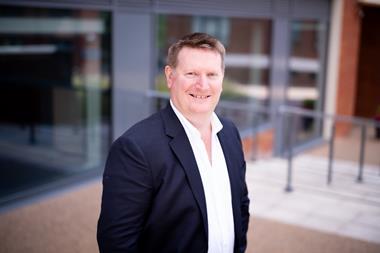Sarah Kennedy says that Allianz is the latest in a line of firms seeking to merge divisions to adapt to market changes.
When Allianz announced it would be combining its personal lines and specialty divisions into Allianz Retail, thoughts automatically turned to tales of reducing expenses and curbing overhead costs.
In the face of an £83m flooding bill, news that personal lines general manager Nick Hall and Allianz specialty general manager Gareth Jones were leaving the company, with John Dye being handed the reigns to their divisions, could logically be perceived as an attempt for the company to maintain profits in a challenging market.
But chief executive Andrew Torrance has steadfastly maintained that is not the case.
The changes, he said, are not a mission to reduce expenses but a move to run the business in a more aligned manner to realise the company’s substantial growth ambitions.
Strategically, it makes sense for the two divisions to become more closely entwined. Perhaps it was a case in the past of one foot not knowing what the other was doing.
There will obviously now be numerous cross-selling and growth opportunities that were perhaps missed in the past.
Allianz are not be the first to embark on this strategy and, according to one analyst, it’s a trend likely to continue at this stage in the market cycle.
Three years ago eyebrows were raised when Guy Munnoch, then managing director of Zurich Municipal, announced the division would converge with commercial lines.
The company’s strategy was called into question, with many wondering what the benefits would be of combining municipal and commercial.
Munnoch’s rationale was not all that different from Torrance’s.
The two divisions, he said at the time, were similar in size and scope and shared common strategies.
The convergence would allow municipal and commercial to share best practice advice and become a multi-niche specialist that could create new markets and growth.
Norwich Union (NU) has made similar moves recently, with sweeping changes to its operating structure to streamline business.
The changes have seen RAC further integrated into NU insurance business and bring the management of its distribution channels under control of a single director, John Kitson.
The change was touted as an effort to bring greater cohesion between the channels.
“Strategically it makes sense for two divisions to become more closely entwined. Perhaps it was a case in the past of one foot not knowing what the other was doing
Most recently NU’s changes have resulted in job cuts of 30 director positions as more departments have become streamlined.
More changes are expected at the senior management level as the company looks to continue its restructuring from the top down.
Emergency repair and home insurer Homeserve has centralised its business by pulling together all support services, including HR and marketing, into one department so that managers can focus exclusively on operations.
The move was said to be an effort to realise its ambitious growth plans and capitalise on the major investments
the company has made in technology.
Mark Winlow, senior analyst at LECG, said the pattern of insurers merging divisions could be linked, in part, to the current stage of the market cycle.
Winlow, however, says that integration and alignment have more to do with cost-cutting than chief executives care to admit.
He said: “As the market softens then there is less chance of increasing rates and so there is a need to focus on costs. Rather than have claims people in personal lines and commercial lines and high net worth, for instance, why not put them all in a cross-channel claims function and give the overall claims director the task of reducing the overall cost? In the same way you can outsource IT, HR or marketing.
“Some of the changes are flavour of the month. Businesses often shift the dominant dimension from profit centre to cost centre, centralise to de-centralise and then a few years later there is a switch back.”
Winlow said he predicts profit centres to return within three years as the market changes and new chief executives arrive on the scene.
He sees a future trend of insurers being keen to replicate the focused model that is currently used by Fortis which keeps the business in one location and under the direct control of the chief executive.
He said: “This is a much tighter profit-based model and all insurance pieces go through chief executive Barry Smith.
“They haven’t split the distribution. Barry has not been caught up in the fad of building up horizontal lines in business.”
Winlow said this model allows a company to remain more controlled and focused on where the premium comes from.
If Winlow is right, this could become the favoured approached adopted by insurers in the near future. But if history is any indication, it’s unlikely to be the last.
Hosted by comedian and actor Tom Allen, 34 Gold, 23 Silver and 22 Bronze awards were handed out across an amazing 34 categories recognising brilliance and innovation right across the breadth of UK general insurance.











































